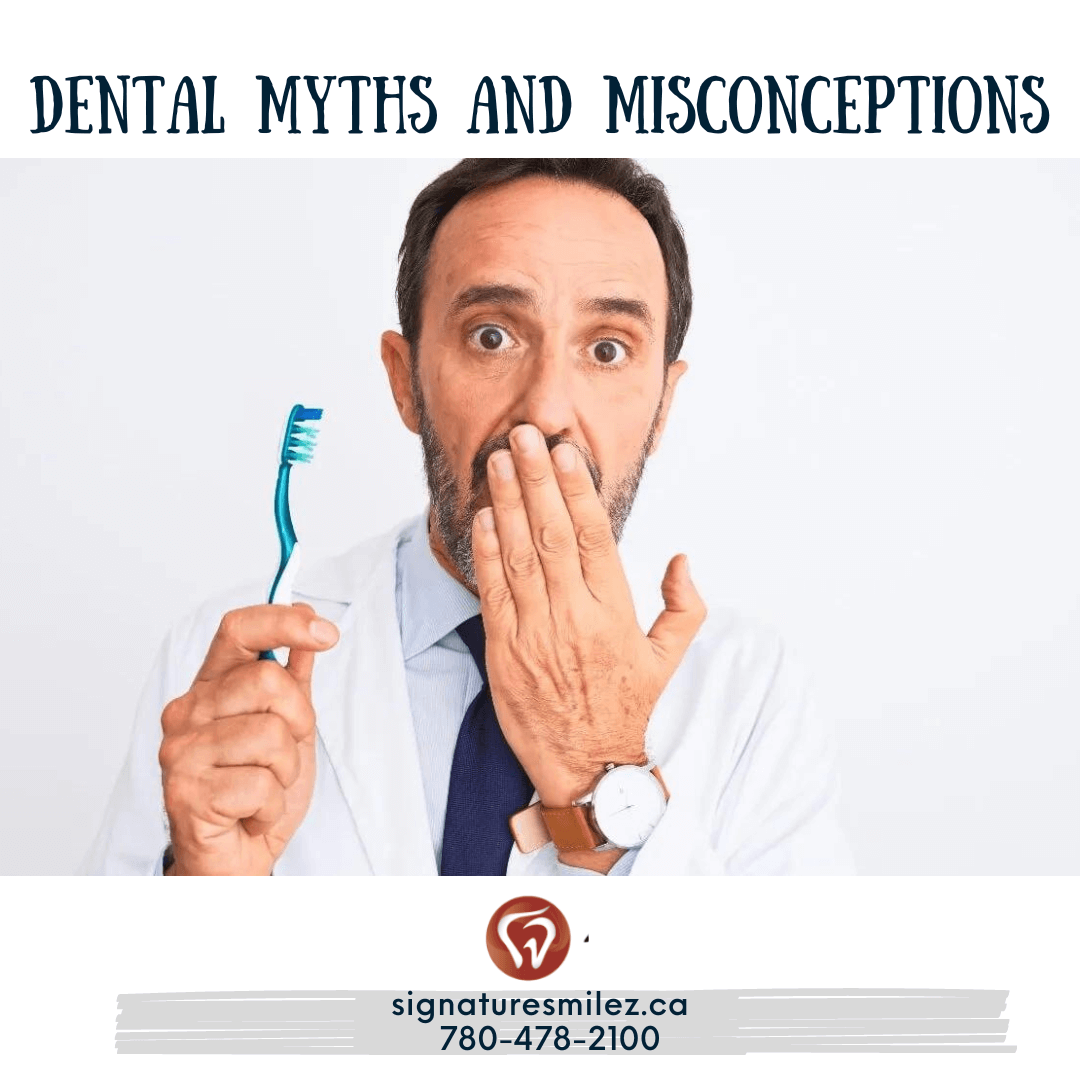Dental care is an important aspect of overall health, yet there are still many myths and misconceptions surrounding it. These false beliefs can lead to poor oral hygiene and ultimately, dental problems. In fact, older adults are at a higher risk for tooth decay due to a decline in oral hygiene and an increase in the consumption of sugary and acidic foods. It is important for people of all ages to maintain good oral hygiene and see a dentist regularly to prevent cavities.
Some people believe brushing your teeth immediately after eating or drinking acidic foods is bad for your teeth. This is not true as brushing your teeth immediately after eating or drinking acidic foods can help to remove any food particles and neutralise the acid in your mouth. However, it is important to wait at least 30 minutes after eating or drinking acidic foods before brushing to allow your saliva time to neutralize the acid and prevent tooth erosion.
Another misconception is that teeth whitening treatments are only for people with yellow teeth. Teeth whitening treatments can be used to remove surface stains caused by smoking, drinking coffee, tea or red wine and other factors.
At-home teeth whitening treatments typically involve using a custom-fitted tray and a whitening gel that is worn for a specified amount of time each day. The results from at-home treatments may take several days or weeks to become visible.
In-clinic teeth whitening is considered to be more effective than at-home teeth whitening for several reasons:
- Stronger concentration of whitening agents: In-clinic teeth whitening uses a higher concentration of hydrogen peroxide or carbamide peroxide, which is more effective in removing stains and whitening teeth.
- Professional oversight: A dental professional supervises the in-clinic teeth whitening process and can adjust the treatment based on the individual’s needs and teeth sensitivity. They also monitor the process to ensure that it is safe and effective.
- Faster results: In-clinic teeth whitening can produce noticeable results in just one appointment, whereas at-home treatments may take several weeks to show significant improvement.
- Custom-fitted trays: In some cases, a dental professional may make custom-fitted trays for in-clinic teeth whitening. These trays provide a better fit and ensure that the whitening gel is evenly distributed on the teeth and doesn’t seep into the gums which will cause irritation of gums and sensitivity.
Another common myth is that flossing is not necessary if you brush your teeth regularly. This is not true. Brushing only cleans the surface of your teeth and cannot reach between teeth and under the gumline. Flossing is absolutely necessary to remove plaque and food particles from these areas and to prevent tooth decay and gum disease.
Another myth is that you only need to see a dentist if you are experiencing pain or discomfort. This is not true, as many dental problems do not cause pain until they are in advanced stages. Regular dental check-ups are important to detect and prevent oral health problems before they become serious.
Another common misconception about teeth cleaning is that it will cause teeth to become unstable and damage the enamel. Calculus, also known as tartar, is a hard deposit that forms on the teeth over time, and it can only be removed by a dental professional. The stability of teeth comes from the roots, the surrounding gums, and the supporting structures such as the jawbone.
Getting rid of calculus can actually improve the stability and health of the teeth by preventing gum disease and tooth decay. It is important to have regular dental cleanings to remove plaque,calculus and maintain good oral health.
Another myth that removing wisdom teeth leads to the loss of wisdom is a false misconception. Wisdom teeth removal is a common dental procedure that is performed by an oral surgeon or dentist. The procedure is safe and does not cause the loss of wisdom. In fact, removing wisdom teeth can improve oral health by preventing crowding, pain, and infection.
Wisdom is not related to the presence or absence of wisdom teeth.
Another myth is that you can cure cavities using natural remedies: While some natural remedies such as oil pulling or eating certain foods can help prevent tooth decay, they are not a cure for cavities. Cavities are caused by the buildup of plaque and bacteria, and they can only be treated by filling or a crown by a dental professional.
Another myth is Fillings will fall out after a few years: Fillings can last for several years, depending on the type of filling, location in the mouth and any oral habits like grinding or clenching. Fillings can last with proper oral hygiene and regular dental check-ups.
Another myth is Fluoride is toxic and should be avoided: Fluoride is a naturally occurring mineral that is essential for good oral health. It is added to drinking water and dental products to help prevent tooth decay. Fluoride is safe when used in the recommended amounts, and there is no evidence that it is toxic.
Brushing your teeth too much can cause tooth sensitivity: Brushing your teeth twice a day with a soft-bristled toothbrush and fluoride toothpaste can help to remove plaque and prevent tooth decay. Brushing hard or using a toothbrush with hard bristles can cause tooth wear and damage to the enamel, but brushing your teeth twice a day as recommended by dental professionals is not too much.
In conclusion, there are many myths and misconceptions surrounding dental care that can lead to poor oral hygiene and dental problems. It is important to understand the facts and to maintain good oral hygiene, including regular brushing, flossing and dental check-ups. It is also important to consult a dentist before undergoing any treatment to ensure it is safe and effective for you. By debunking these myths, people can make informed decisions about their oral health and have healthier, happier smiles.

